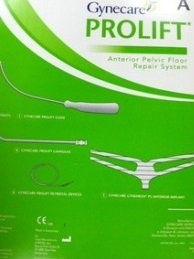
Check Out Our New Forum!
The Your Turn Forum provides a space where people can post questions about mesh and medical device related issues and get advice and support from the Mesh News Desk community.
Join the Discussion!
Art Courtesy of Jade R.
Mesh Medical Device News Desk, June 30, 2016 ~ MYTH BUSTERS- What Women Are Told Today About Pelvic Mesh
This is part three of a multi-part series uncovering common myths related to pelvic mesh. Myth Busters Part One can be found here while Myth Busters Part Two can be found here.
Myth #7- We can take it out if there’s a problem
‘Don’t worry, if there is a complication we can take the “tape” out,’ has been heard by many women who are being sold on a pelvic mesh implant. This is a dangerous myth. Fact: Mesh is intended to be a permanently implanted medical device. Whether to treat incontinence, prolapse or a hernia, mesh is not intended to be removed. Ever. In time, it incorporates with the body. A removal or explant has been likened to removing gum from hair. There are a few experienced surgeons who specialize in mesh removal but a total removal is nearly impossible. Fragments are always left behind as are the anchors, deeply placed in muscle and ligament. Scar tissue results from an aggressive removal, which has been shown to cause mesh to shrink and encapsulate nerves. Experiencing severe, unrelenting pain after an implant indicates a mesh removal should be attempted, according to expert surgeons.
Myth #8 – Only Bad Doctors Have Complications

Image from foreclosure fraud
This defies logic. Are there 100,000 bad doctors in the U.S. implanting mesh? Medical societies have convinced their membership that a few “bad apples” are responsible for mesh injuries. ‘YOU would never have a problem.’ Fact: Many implanting doctors were trained during weekend cadaver clinics. Others have sales reps in the room during surgery directing the procedure, sales reps who are not surgeons or even doctors. And if manufacturers know there are inexperienced doctors placing mesh, why do they continue to sell to them?

Prolift for POP repair
Myth #9 – The Problem is With Prolapse Mesh not Slings
Manufacturers and their consultant doctors have learned to call pelvic mesh “tape” or “slings” to soft sell it. Fact: It’s still a polypropylene mesh even though a “tape” or a “sling” is a smaller piece of plastic mesh used in the treatment of stress urinary incontinence (SUI). The truth is the courts have more lawsuits lodged against SUI mesh, both TVT and TVT-O, than against the larger mesh for pelvic organ prolapse (POP). TVT-O has been found to be defective by a number of juries who have listened to the evidence. The U.S. Food and Drug Administration has ordered POP mesh manufacturers to show their products are safe and effective before they are reclassified as “high-risk” or Class III by the FDA in two years. This applies only to POP mesh and not the TVT and TVT-O used to treat incontinence. That remains Class II or a “moderate risk.” It is still implanted every day.
Myth #10 – Don’t Read the Internet

Wikihow.com
The internet is fast becoming the outlet for all credible and established publishers. Fact: Today most people get their news online! That includes medical news and especially news regarding medical devices and pelvic mesh. There are awesome communities of injured who have come forward on the web to share their stories, the names of their bad doctors and most importantly, to help others with any remedies or doctors who have improved their life after suffering complications from pelvic mesh. The communities of women, men and families are tweeting, posting on Facebook and reading the gathering places like Mesh News Desk to catch the latest news, legal developments and the emerging medical and science on mesh. We only wish more doctors would read the internet. #